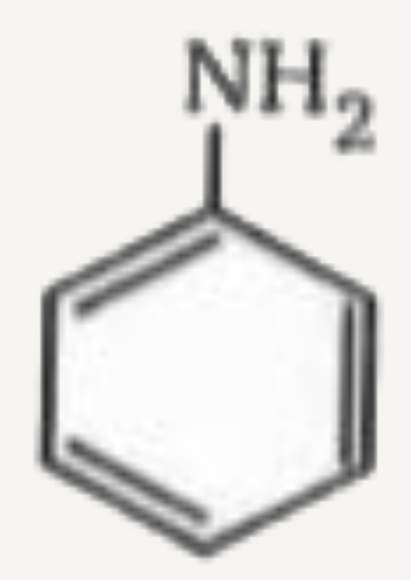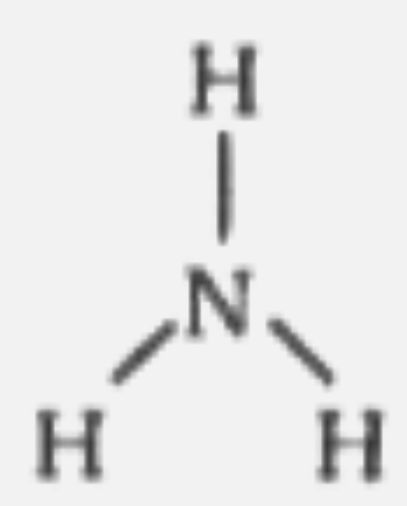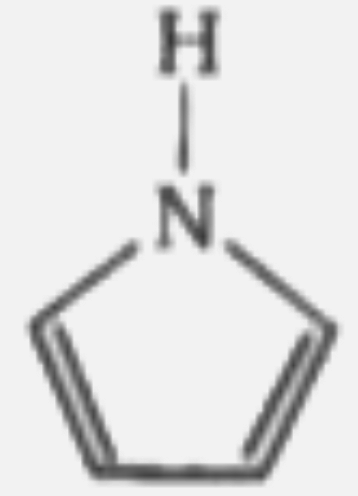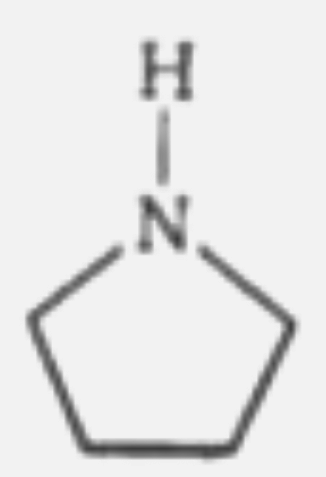Which of the following is the strongest base ?
tert-butoxide
Ethoxide
iso-propoxide
Methoxide
The correct Answer is:A
To determine which of the following compounds is the strongest base among tertiary butoxide, ethoxide, isopropoxide, and methoxide, we can analyze their structures and the effects of their substituents on basicity.
1. Understanding Basicity:
- Basicity refers to the ability of a compound to donate a lone pair of electrons or accept protons. The stronger the base, the higher its tendency to donate its lone pair.
2. Analyzing the Options:
- Option 1: Tertiary Butoxide (C(CH3)3O-):
- This compound has three methyl (CH3) groups attached to the central carbon. The presence of these three electron-donating groups enhances the electron density on the oxygen atom, increasing its ability to donate electrons and accept protons.
- Option 2: Ethoxide (CH3CH2O-):
- Ethoxide has two carbon atoms and one methyl group. While it also exhibits a +I effect (inductive effect) due to the alkyl group, the effect is weaker compared to tertiary butoxide because it has fewer electron-donating groups.
- Option 3: Isopropoxide ((CH3)2CHO-):
- Isopropoxide has two methyl groups and one ethyl group. The +I effect is present, but again, it is less than that of tertiary butoxide due to having only two methyl groups.
- Option 4: Methoxide (CH3O-):
- Methoxide has only one methyl group. While it does have a +I effect, it is the weakest among the four options due to the least number of electron-donating groups.
3. Comparing Basicity:
- The strength of the base is influenced by the number of electron-donating alkyl groups. The more alkyl groups present, the higher the electron density on the oxygen, and thus, the stronger the base.
- Tertiary butoxide has the highest number of electron-donating groups (three methyl groups), followed by isopropoxide (two methyl groups), ethoxide (one methyl group), and methoxide (one methyl group).
4. Conclusion:
- Based on the analysis, tertiary butoxide has the highest basicity due to the strong +I effect from three methyl groups, making it the strongest base among the options provided.
Final Answer:
The strongest base among the given options is Tertiary Butoxide (Option 1).
---
- Basicity refers to the ability of a compound to donate a lone pair of electrons or accept protons. The stronger the base, the higher its tendency to donate its lone pair.
- Option 1: Tertiary Butoxide (C(CH3)3O-):
- This compound has three methyl (CH3) groups attached to the central carbon. The presence of these three electron-donating groups enhances the electron density on the oxygen atom, increasing its ability to donate electrons and accept protons.
- Option 2: Ethoxide (CH3CH2O-):
- Ethoxide has two carbon atoms and one methyl group. While it also exhibits a +I effect (inductive effect) due to the alkyl group, the effect is weaker compared to tertiary butoxide because it has fewer electron-donating groups.
- Isopropoxide has two methyl groups and one ethyl group. The +I effect is present, but again, it is less than that of tertiary butoxide due to having only two methyl groups.
- Methoxide has only one methyl group. While it does have a +I effect, it is the weakest among the four options due to the least number of electron-donating groups.
- The strength of the base is influenced by the number of electron-donating alkyl groups. The more alkyl groups present, the higher the electron density on the oxygen, and thus, the stronger the base.
- Tertiary butoxide has the highest number of electron-donating groups (three methyl groups), followed by isopropoxide (two methyl groups), ethoxide (one methyl group), and methoxide (one methyl group).
- Based on the analysis, tertiary butoxide has the highest basicity due to the strong +I effect from three methyl groups, making it the strongest base among the options provided.
The strongest base among the given options is Tertiary Butoxide (Option 1).
Topper's Solved these Questions
- ALCOHOLS, PHENOLS AND ETHERSBOOK - AAKASH INSTITUTE ENGLISHCHAPTER - ALCOHOLS, PHENOLS AND ETHERSEXERCISE - Assignment Section - A (Objective type questions)
45 Videos
- ALCOHOLS, PHENOLS AND ETHERSBOOK - AAKASH INSTITUTE ENGLISHCHAPTER - ALCOHOLS, PHENOLS AND ETHERSEXERCISE - Assignment Section - B (Objective type questions)
25 Videos
- ALCOHOLS, PHENOLS AND ETHERSBOOK - AAKASH INSTITUTE ENGLISHCHAPTER - ALCOHOLS, PHENOLS AND ETHERSEXERCISE - Try yourself
5 Videos
- ALCOHOLS, PHENOLS AND ETHERS BOOK - AAKASH INSTITUTE ENGLISHCHAPTER - ALCOHOLS, PHENOLS AND ETHERS EXERCISE - Try Yourself
5 Videos
Similar Questions
Knowledge Check
Which of the following is the strongest Bronsted base ?
A B
B C
C D
D
Which of the following is the strongest Bronsted base ?
A B
B C
C D
D
Which among the following is the strongest base?
View SolutionWhich one of the following is the strongest base in aqueous solution ?
View SolutionWhich of the following is the strongest acid?
View SolutionWhich of the following is the strongest acid in water?
View SolutionWhich of the following is the strongest nucleophile?
View SolutionWhich of the following is the strongest nucleophile ?
View Solution
